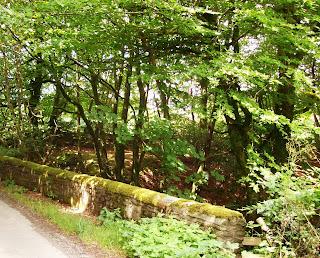Something of a hotch-potch perhaps, but here are a handful of quirky days and dates associated with Devon's women writers: Mary Palmer (born Reynolds), born February 7th, 1716. Mary was the author of The Devonshire Dialect.
 |
| The Devonshire Dialect |
 The infamous Mary Willcocks, the so-called 'Princess Caraboo', who was born and brought up on a farm near Witheridge, spent her last days in Bristol and her own daughter, also Mary, died in a house full of cats, in a fire in February 1900.
The infamous Mary Willcocks, the so-called 'Princess Caraboo', who was born and brought up on a farm near Witheridge, spent her last days in Bristol and her own daughter, also Mary, died in a house full of cats, in a fire in February 1900. 
The C19 diarist Miss Green, from Brixham, was staying with her Uncle and Aunt on an extended visit, at Brompton, near Chatham in Kent, in February 1841. On the 3rd of the month she was studying 'chemistry' with friends (and presumably her Uncle/Aunt) and on the 15th February they read a lecture on 'Herschel's Natural Philosophy'. The following year (1842?) back in her home-town, the diarist visits the dentist on 12th February for two extractions; unfortunately she seems later in the year still to be suffering from debilitating toothache. Agatha Christie's The Dream was first published in the UK in the Strand Magazine in issue 566, in February 1938. A few passages with novelists writing of February:
On an unexpectedly warm February day birds inland were rehearsing their spring song, but the beach was silent; it stretched wide and empty. A heron flapping its way with lazy sweeps emphasised the emptiness as it left the estuary to ... (from Mary Wesley, A Sensible Life)  and
and
Captain Penrice found nothing to say, because there was nothing : he believed it a correct summary. " But," at last he said, hesitating, " what of Wilmot ? What's in your mind about her ? Here's
February, and the months go by and ... (
Mary Patricia Willcocks,
A Wingless Victory (1907)


and
For it was a wild day in
February and the light that filled the church was sullen with storm-clouds. The moisture from walls and vaults lay thick on the pillars of black Cataclew stone between the low arches of the church (
Mary Patricia Willcocks,
The Eyes of the Blind, (1917)
and

The time had slipped by so quickly that it was hard to believe that rather more than eight weeks had elapsed since that grey
February evening when she had alighted on the little, deserted platform at Coombe Eavie Station (
Margaret Pedler,
The House of Dreams Come True).
 On February 5th 1833 Anna Eliza Bray wrote a letter from her home at the Vicarage in Tavistock to her mentor Robert Southey in which she enthused about the Walla Brook on the river Tavy.
On February 5th 1833 Anna Eliza Bray wrote a letter from her home at the Vicarage in Tavistock to her mentor Robert Southey in which she enthused about the Walla Brook on the river Tavy.
 |
| Over the Walla |
During the First World War, in February 1916, the H.D. travelled down to Martinhoe in north Devon with her husband Richard Aldington. They stayed at the Old School House and then in nearby Woodland Cottage for several months, writing and enjoying the respite from the war.
 |
| Woodland Cottage |
And last but decidedly not least Sylvia Plath, having left North Tawton at in December 1962, died on February 11th in London, in 1963. Several of her last poems were written in February that year.
 |
| North Tawton churchyard |



No comments:
Post a Comment
Do send feedback on this blog.